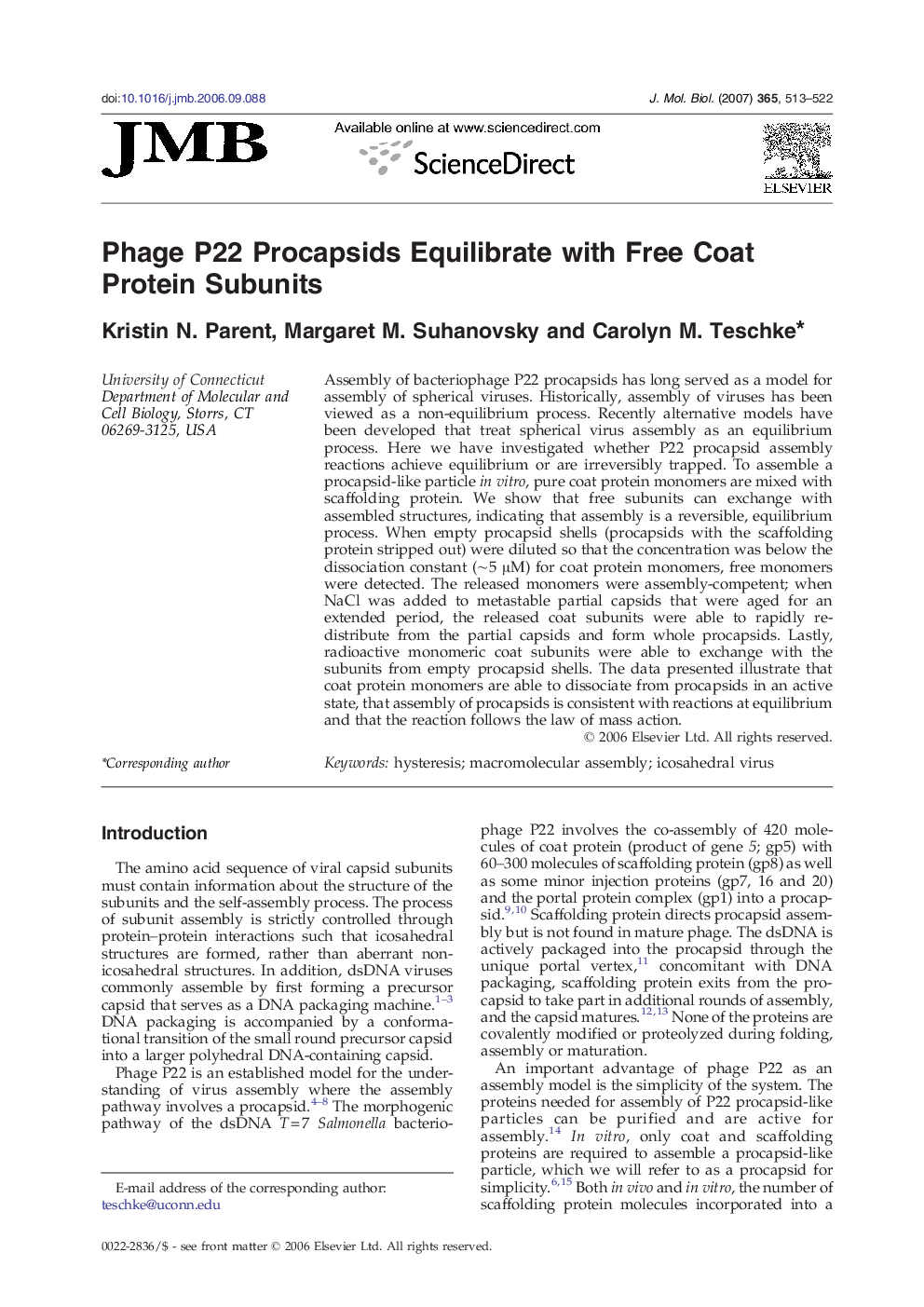| Article ID | Journal | Published Year | Pages | File Type |
|---|---|---|---|---|
| 2188569 | Journal of Molecular Biology | 2007 | 10 Pages |
Assembly of bacteriophage P22 procapsids has long served as a model for assembly of spherical viruses. Historically, assembly of viruses has been viewed as a non-equilibrium process. Recently alternative models have been developed that treat spherical virus assembly as an equilibrium process. Here we have investigated whether P22 procapsid assembly reactions achieve equilibrium or are irreversibly trapped. To assemble a procapsid-like particle in vitro, pure coat protein monomers are mixed with scaffolding protein. We show that free subunits can exchange with assembled structures, indicating that assembly is a reversible, equilibrium process. When empty procapsid shells (procapsids with the scaffolding protein stripped out) were diluted so that the concentration was below the dissociation constant (∼5 μM) for coat protein monomers, free monomers were detected. The released monomers were assembly-competent; when NaCl was added to metastable partial capsids that were aged for an extended period, the released coat subunits were able to rapidly re-distribute from the partial capsids and form whole procapsids. Lastly, radioactive monomeric coat subunits were able to exchange with the subunits from empty procapsid shells. The data presented illustrate that coat protein monomers are able to dissociate from procapsids in an active state, that assembly of procapsids is consistent with reactions at equilibrium and that the reaction follows the law of mass action.
